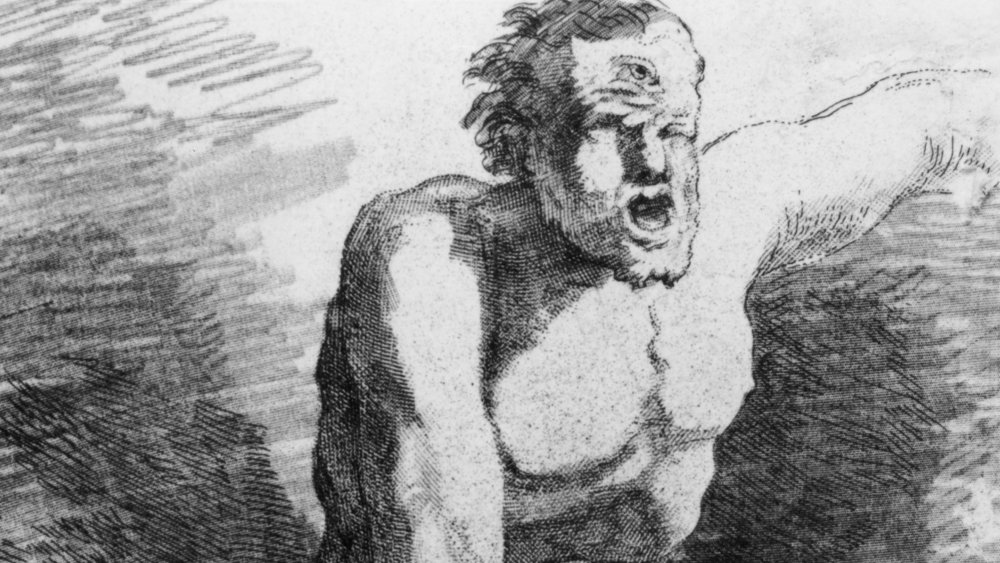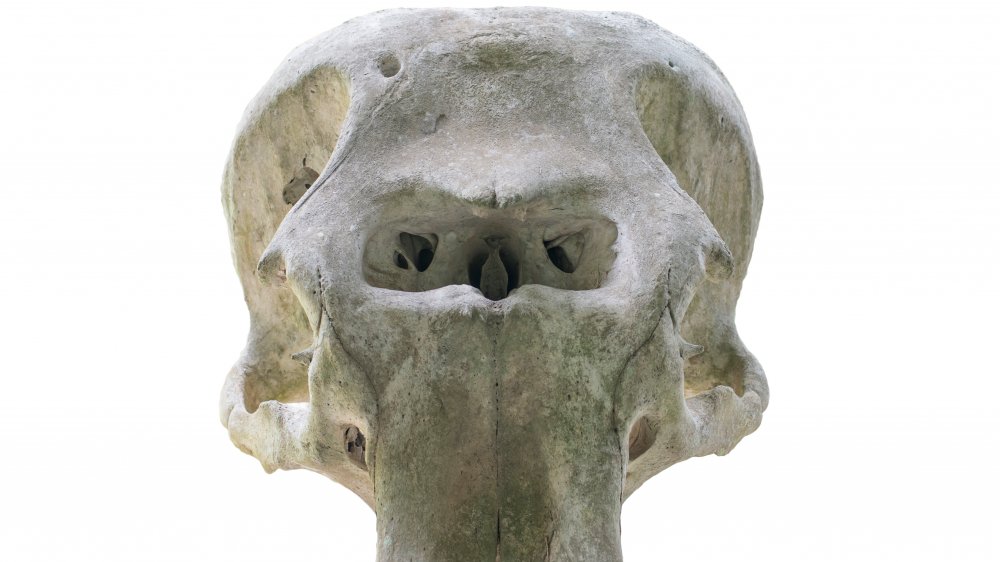The Real Reason People Used To Think The Cyclops Existed
Coming from a Greek compound noun meaning "round eye," the cyclops is a monster defined by having one eye in the center of its forehead. The best known role it plays is a pivotal one in the Odyssey as well as Ulysses The Greek Suite, its resulting rock opera. When Odysseus almost made it back to Ithaca, his homeland, the first time, he and his crew overshot their destination and landed on Sicily. There, they stumbled upon Polyphemus the cyclops tending top his flock. He trapped the Ithacans in his cave, bashed a few of their brains out, and proceeded to eat them, saving Odysseus, who introduced himself as Nobody, for last out of a twisted sense of hospitality.
Understandably, Odysseus was not keen on being consumed, so he offered Polyphemus alcohol. Being unused to booze, the cyclops grew blind drunk and fell asleep. Then Odysseus and his crew proceeded to blind Polyphemus with a giant stake. The cyclops ran outside screaming about how much pain he was in, but when the other cyclopses asked him who had done this, Polyphemus only cried "Nobody!" — that is just how clever Odysseus was compared to the other Greek heroes. However, Odysseus couldn't resist taunting the beast as he fled Sicily and let slip his name, a fact Polyphemus seized upon to pray to Poseidon that Odysseus should have a hard time getting home.
A real cyclops?
Today we don't see giant one-eyed men stalking the land, nor do many really think that the Greeks did either. However, these facts don't discourage us from trying to find out from where the idea of the cyclops came.
The most common theory is that the Greeks tripped over various pieces of prehistoric skeletons. These areas to this day boast bountiful fossil beds but since paleontology had not become a systematic discipline yet, the Greek's method for reconstructing the beings that these skeletons supported was more haphazard. So when they found a mammoth's skull without either its tusks or trunk, they concluded that the hole in the center that would have been the mammoth's nasal passages must have served as an eye socket. The theory develops further when you realize that Crete, a Greek island south of the Peloponnesus, was once home to mini mammoths, the skulls of which would be vaguely human sized while still sporting the hole of the decomposed trunk.
However, we can also consider actual cases of cyclopia. Cyclopia is an extreme form of holoprosencephaly, according to Rare Diseases, a disorder in which the brain doesn't develop into left and right hemispheres, but remains one undeveloped mass. In cases of cyclopia, the outward symptoms include one undivided eye. Cases of human cyclopia are rare and those born with it are either stillborn or die a few hours later from lack of brain development, not eye.

